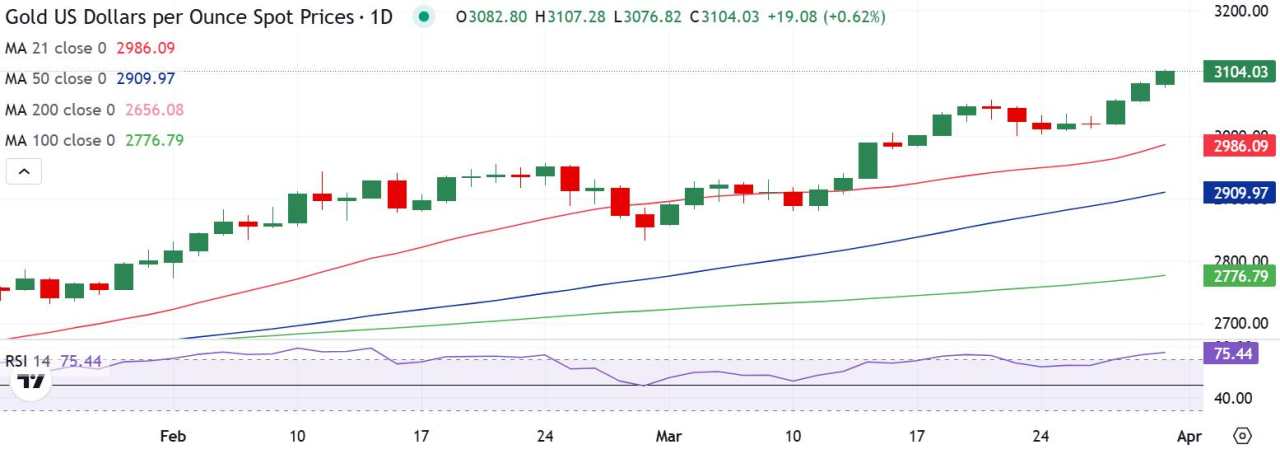The record rally in Gold price remains unabated as buyers conquer the $3,100 threshold for the time on record. Heightening fears of a potential global trade war and stagflation in the United States (US) intensify safe-haven demand for the traditional store of value, Gold.
The latest Wall Street Journal (WSJ) report highlighted that US President Donald Trump could aim for higher and broader reciprocal tariffs on the ‘Liberation Day’, April 2, triggering a fresh risk-aversion wave across the board.
“Advisers have considered imposing global tariffs of up to 20% that would hit virtually all US trading partners,” the WSJ reported.
It’s a ‘sell everything’ mode for markets, as nervousness grows alongside concerns over a widespread tit-for-tat tariff war, which could intensify inflationary pressures and stifle global economic activity. Investors typically resort to the ultimate safe-haven, the Gold price, in times of market unrest and panic.
The US Dollar (USD) and US Treasury bond yields bear the brunt of mounting US stagflation fears, aiding the record-setting rally in Gold price.
That said, it remains to be seen if Gold price can sustain the ongoing uptrend as traders could resort to profit-taking ahead of the April 2 tariffs announcements by Trump.
Technically, Gold price risks a correction as the daily Relative Strength Index (RSI) has entered into an extremely overbought zone, currently nearing 76.

Tariffs FAQs
Tariffs are customs duties levied on certain merchandise imports or a category of products. Tariffs are designed to help local producers and manufacturers be more competitive in the market by providing a price advantage over similar goods that can be imported. Tariffs are widely used as tools of protectionism, along with trade barriers and import quotas.
Although tariffs and taxes both generate government revenue to fund public goods and services, they have several distinctions. Tariffs are prepaid at the port of entry, while taxes are paid at the time of purchase. Taxes are imposed on individual taxpayers and businesses, while tariffs are paid by importers.
There are two schools of thought among economists regarding the usage of tariffs. While some argue that tariffs are necessary to protect domestic industries and address trade imbalances, others see them as a harmful tool that could potentially drive prices higher over the long term and lead to a damaging trade war by encouraging tit-for-tat tariffs.
During the run-up to the presidential election in November 2024, Donald Trump made it clear that he intends to use tariffs to support the US economy and American producers. In 2024, Mexico, China and Canada accounted for 42% of total US imports. In this period, Mexico stood out as the top exporter with $466.6 billion, according to the US Census Bureau. Hence, Trump wants to focus on these three nations when imposing tariffs. He also plans to use the revenue generated through tariffs to lower personal income taxes.
Được in lại từ FXStreet_id, bản quyền được giữ lại bởi tác giả gốc.
Tuyên bố miễn trừ trách nhiệm: Quan điểm được trình bày hoàn toàn là của tác giả và không đại diện cho quan điểm chính thức của Followme. Followme không chịu trách nhiệm về tính chính xác, đầy đủ hoặc độ tin cậy của thông tin được cung cấp và không chịu trách nhiệm cho bất kỳ hành động nào được thực hiện dựa trên nội dung, trừ khi được nêu rõ bằng văn bản.


Tải thất bại ()